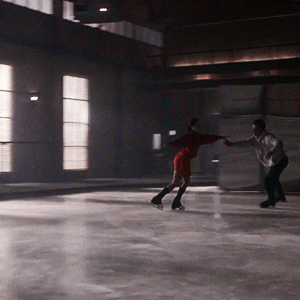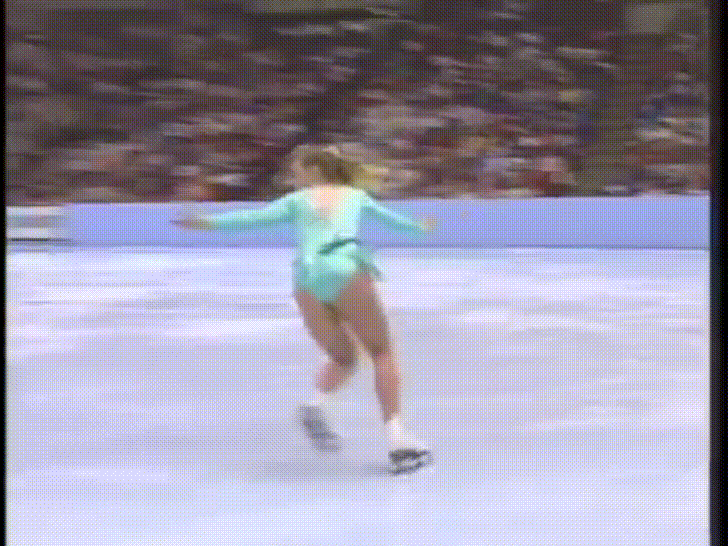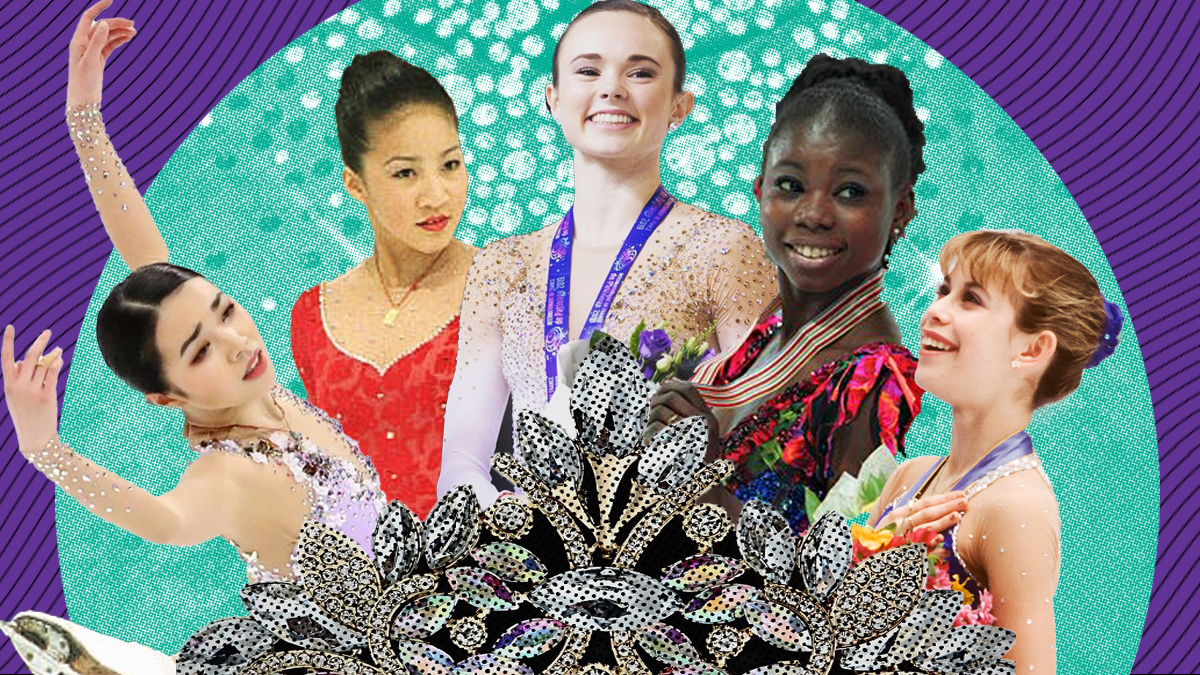Abortion rights, women of color, and LGBTQIA+ people are under attack. Pledge to join us in fighting for gender justice.
More Mascs on Ice, Please! Figure Skating’s Feminization and Its Consequences for Gender Expression
The Olympic Winter Games—and more importantly, Olympic figure skating—is well underway, and frankly, I’ve never been happier about it. I wrote last week about how figure skating deserves its moment this Olympics. But after these first few days, I found myself not only thinking about the feminization of figure skating (and subsequent mistreatment of its athletes) but also how any masculinity within the sport is heavily policed—especially when that masculinity comes from women.
Let’s Go Back in Time…
1992: not only figure skating’s recent golden age, but also the golden age of film, because The Cutting Edge came out. It’s a straight-from-Wattpad, enemies-to-lovers, Olympic love story extravaganza that gives us insight into such a pivotal time for the sport.
Like I discussed last week, hockey player Doug hides his figure skating from loved ones to not be perceived as feminine, but becomes beloved once he goes public. We also see prima donna skater Kate unable to make it to Olympic ice without being placed in a couple. This is not due to her talent, but because the figure skating world—personified through her male coaches, father, and Team USA officials—continuously label her difficult.
Now, I’m the first to say that Kate sucks interpersonally and should be brought down in the eventual class war, but her “difficulty” seems to be her competitiveness, perfectionism, and work ethic that she expects partners to match. Judith Butler would agree: these are typically masculine traits that she shares with Doug; to be the best in their respective sports. It seems that what makes Kate difficult is that she’s a woman who acts on her masculinity—and she isn’t the only one.

Icons On Ice, Off-Screen!
Early ‘90s French skater Surya Bonaly—one of few Black women skaters at the time—was the first woman to attempt quadruple jumps in competition, and she remains the first and only skater to land a backflip on ice. She should have been a superstar, instead, her talent was met with backflips being banned from competition. She revealed in later interviews that the public saw her as “mean” or “tough” for her demeanor and repeated attempts at difficult tricks. Not only was she not supported by the figure skating world despite clear dedication to advancing women’s figure skating, she was also effectively punished for “showing off.”
It seems, like Kate, that owning her talent and dedicating herself to her sport—rather than sitting down, shutting up, and looking pretty—led Surya to be abandoned. As a Black woman—which comes with its own masculinization—any movement away from feminine norms prevented her from being uplifted by elite figure skating in the way she should have.
The 1994 Tonya Harding vs. Nancy Kerrigan scandal is also a prime example. The media ate it up not only because it was interesting and obvious class commentary, but also because it was an easy way to contrast how different women perform their gender.
While Nancy was represented as a graceful, demure princess (a portrait of femininity), Tonya was expressive, competitive, and demanding of coaches, officials, and the public to recognize and support her talent, even when they didn’t want to. While the scandal is what got her permanently banned from the sport, being an unconventional skater and woman made alienating her easier.

So, Before I Step Off My Soapbox…
Gender doesn’t exist in a vacuum. Race, class, and all overlapping identities impact how masculine or feminine society perceives you, regardless of gender identity. These three examples are cisgender women and extremely likely to be received by society as such! Sexism, racism, and classism are baked into the small world of elite figure skating, so even slight transgressions against feminine norms lead to institutional alienation.
So, there’s a reason why there isn’t more range of gender expression among elite figure skaters, but that might be changing. Skater Timothy DeLuc is the first openly non-binary athlete to qualify for the Olympics—but notably, Team USA and the media have not so far considered them an athlete to watch. Hopefully, the figure skating comeback I’m gunning for will include more athletes like Timothy in the spotlight and will make room for a range of gender expression on the elite stage.
Finally, strength and drive shouldn’t be associated with men when everyone has masculinity and femininity inside them, but under patriarchy, these are the norms we have to fight against daily.
I want to leave you with permission to express yourself however you’d like—on or off the metaphorical ice—because owning your talent and being confident isn’t something relegated to the world of cis- men. Think of Tonya, Surya, and Kate when you go out there and do your best at whatever you do—and own the sh*t out of it.

